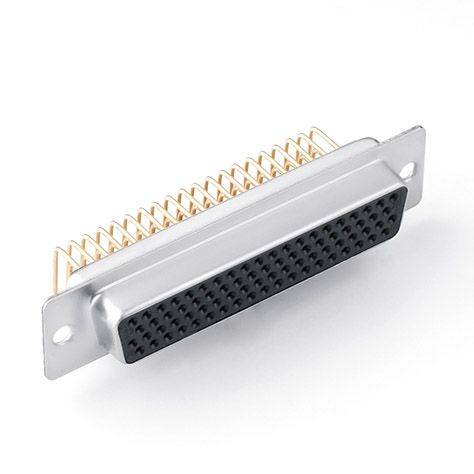Why Choose High Density D-Sub Connectors for Reliable Connections?
2025-09-09
When industries demand compact, durable, and efficient electronic connections, High Density D-Sub Connectors often stand out as the best choice. From aerospace to industrial automation, their performance and space-saving design make them an indispensable component. This article provides an in-depth look into their features, applications, parameters, and why they remain a standard solution for engineers worldwide.
What Are High Density D-Sub Connectors?
High Density D-Sub Connectors are an evolved form of standard D-sub connectors, designed to provide more contact points within the same physical shell size. Compared with standard types, they can host up to 62% more pins, giving engineers the ability to connect multiple circuits without increasing board space.
Their hallmark lies in the combination of:
-
Space optimization: Smaller pitch between contacts.
-
Durability: Rugged shells for mechanical stability.
-
Versatility: Multiple mounting and termination options.
-
Compatibility: Used in both signal and power transmission applications.
These features make them a go-to choice for precision industries, including those served by Dongguan Signalorigin Precision Connector Co., Ltd., a manufacturer specializing in high-quality connector solutions.
Key Features of High Density D-Sub Connectors
-
Compact Design – Accommodates more pins in the same shell size.
-
Wide Range of Pin Counts – Options from 15HD to 78HD contacts.
-
Material Excellence – Stamped and formed contacts with gold or tin plating for reliability.
-
Current Handling – Supports both low-voltage signal and power connections.
-
Mounting Styles – Right-angle, straight, and panel-mounting.
-
Environmental Resistance – Options for EMI/RFI shielding to ensure signal integrity.
-
Versatile Applications – Aerospace, medical devices, factory automation, and data communication equipment.
Product Parameters of High Density D-Sub Connectors
The following list highlights typical specifications offered by manufacturers such as Dongguan Signalorigin Precision Connector Co., Ltd.:
-
Contact Positions: 15, 26, 44, 62, 78
-
Pitch: 2.29 mm (high density configuration)
-
Termination Styles:
-
Solder cup
-
Straight PCB tail
-
Right-angle PCB tail
-
Crimp termination
-
-
Contact Plating: Gold over nickel or tin plating
-
Shell Material: Steel with nickel or tin plating
-
Operating Temperature: -55°C to +125°C
-
Insulation Resistance: ≥ 5000 MΩ
-
Voltage Rating: 300V AC
-
Current Rating: 3A typical (signal), higher for power pins
Example Table of Specifications
| Parameter | Details |
|---|---|
| Pin Count Options | 15, 26, 44, 62, 78 |
| Contact Pitch | 2.29 mm |
| Contact Plating | Gold over Nickel / Tin options |
| Shell Material | Steel, Nickel or Tin plated |
| Termination Options | Solder cup, Straight PCB, Right-angle, Crimp |
| Voltage Rating | 300V AC |
| Current Rating | 3A (signal pins), higher for power contacts |
| Operating Temperature | -55°C to +125°C |
| Insulation Resistance | ≥ 5000 MΩ |
Advantages of High Density D-Sub Connectors
-
Space Saving – Ideal for compact PCB layouts.
-
High Performance – Maintains electrical integrity under high-density connections.
-
Customization Options – Tailored pin counts, plating thickness, and housing materials.
-
Long-Term Durability – Designed for repeated mating cycles.
-
Electromagnetic Protection – Optional shielding provides stable operation in critical environments.
Applications Across Industries
High Density D-Sub Connectors are versatile and can be found in many demanding environments:
-
Aerospace and Defense – Communication systems, navigation equipment.
-
Medical Devices – Imaging equipment, diagnostic devices.
-
Telecommunications – Switchboards, signal distribution panels.
-
Industrial Automation – Control systems, robotics, factory machinery.
-
Computing & Networking – Servers, storage systems, and test equipment.
The ability to integrate multiple signals into a smaller footprint makes them a natural choice for engineers seeking efficiency without compromise.
FAQ: High Density D-Sub Connectors
Q1: What makes High Density D-Sub Connectors different from standard D-Sub connectors?
A1: Standard D-sub connectors typically use a 2.77 mm pitch, while High Density D-Sub Connectors use a tighter 2.29 mm pitch. This allows up to 62% more pins within the same connector shell, enabling greater functionality in limited space.
Q2: Can High Density D-Sub Connectors handle both signal and power?
A2: Yes, they are designed to carry both. Signal pins typically handle 3A current, while mixed-layout configurations can accommodate higher currents for power distribution, making them flexible for different applications.
Q3: Are High Density D-Sub Connectors suitable for harsh environments?
A3: Absolutely. With proper plating (gold over nickel), rugged steel shells, and EMI/RFI shielding options, they perform well under vibration, temperature extremes, and interference-heavy conditions.
Q4: How do I choose the right High Density D-Sub Connector for my project?
A4: Consider the required pin count, termination style, plating type, current/voltage needs, and environmental protection requirements. Manufacturers such as Dongguan Signalorigin Precision Connector Co., Ltd. provide customization options to match specific engineering needs.
Why Partner with Dongguan Signalorigin Precision Connector Co., Ltd.?
With years of manufacturing expertise, Dongguan Signalorigin Precision Connector Co., Ltd. delivers High Density D-Sub Connectors that balance cost-effectiveness, durability, and precision. Their solutions serve industries worldwide, ensuring reliable connectivity in mission-critical applications.
-
Strict Quality Control – Ensures consistent performance across batches.
-
Customization Services – Tailored designs to meet specific requirements.
-
Global Reach – Serving customers across multiple sectors internationally.
For engineers seeking both performance and reliability, Signalorigin remains a trusted name in the connector industry.
Conclusion
High Density D-Sub Connectors represent the perfect blend of compact design, high performance, and reliability. From industrial machinery to aerospace systems, their adaptability and proven durability make them a critical choice for modern connectivity challenges.
For more information, technical support, or custom orders, please contact: Dongguan Signalorigin Precision Connector Co., Ltd.
